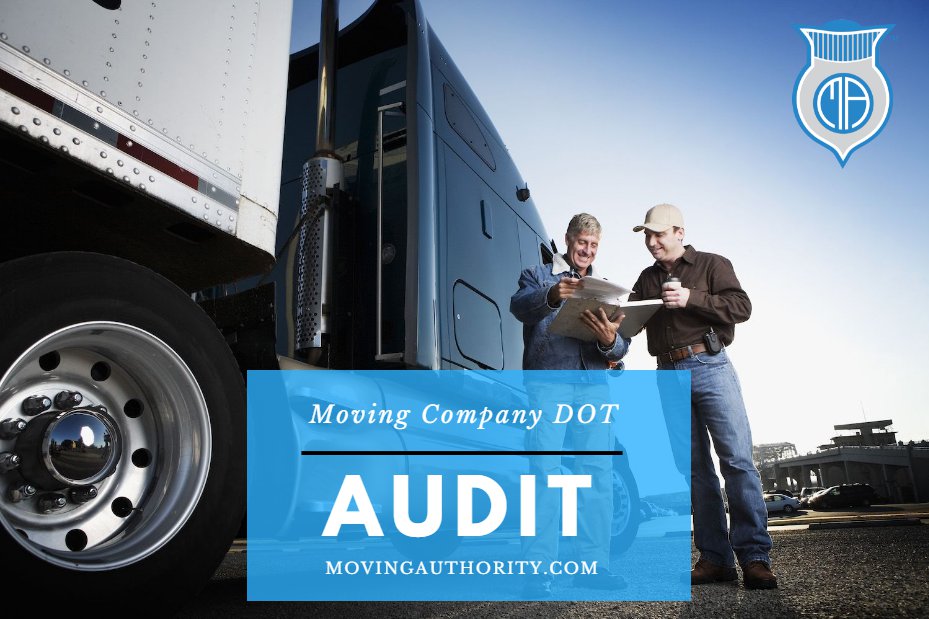Moving Company USDOT Audit
USDOT Audit for Moving Company
Links Related To USDOT Audits
- The USDOT Loves to Surprise You (Not in the Fun Way)
- Which Companies Are Eligible to be Audited By the USDOT?
- When Are Companies Audited by the USDOT?
- What Happens If I Do Not Pass the USDOT Safety Audit?
- What Does the USDOT Check For in a USDOT Safety Audit for Moving Companies?
- DOT Number
- Insurance
- Moving Tariff
- Arbitration Program Membership
- What Your Company Needs Before a USDOT Audit (Video)
1. The USDOT Loves to Surprise You (Not in the Fun Way)
When entering the moving industry, many movers do not know that the USDOT carries out regular audits on moving companies across the United States. These audits are done by the USDOT to check if moving companies are in compliance with the current laws and regulations in regards to transportation of goods. Below are some frequently asked questions regarding moving company audits by the USDOT. What is the Difference Between USDOT Numbers and MC Numbers
2. Which Companies Are Eligible to be Audited By the USDOT?
Any company that uses motor vehicles that are considered commercial motor vehicles. These vehicles are usually used by the company to carry out business tasks. You may still be audited by the USDOT if you are not a moving company. Just having a commercial motor vehicle for business use can make you eligible for an audit. Texas DOT Requirements
3. When Are Companies Audited by the USDOT?
Companies may be selected at any time to be audited by the USDOT. The USDOT will notify you if you are selected to be audited. You are usually given a month or a few weeks in advance to get ready and prepare for an audit. Texas DOT Inspection
4. What Happens If I Do Not Pass the USDOT Safety Audit?
If you do not pass the audit, the USDOT gives you some time to take corrective action in order to meet the requirements of the regulations and laws. The time given to you may either be 45 days or 60 days depending on the type of business you are running. For more information, please visit the FMCSA website. If you fail to take corrective action, you may face fines or even have your business closed down for good. DOT Medical Card
5. What Does the USDOT Check For in a USDOT Safety Audit for Moving Companies?
If you have a moving company and you are selected for a safety audit, it is important to have four things under your belt.
-
-
DOT Number
Having a DOT number is required because it means that you are registered moving company in the eyes of the FMCSA. A DOT number allows the FMCSA to keep track of your company and where it stands in regards to abiding by moving regulations and laws. All the vehicles owned by your company will be under this number making it easier for DOT officers to identify the owner of commercial vehicles stopped for a check on the road. DOT Number Size Requirements
-
Insurance
A moving company must have insurance for its vehicles and for the items that it moves. If an accident occurs or if items get lost or broken, the moving company must be cover the cost of the vehicle or cover the cost of the items that were damaged or stolen. The DOT makes sure that moving companies have insurance in place to protect everyone involved in moves carried out by a moving company. How Do I Get a DOT Number in Texas
-
Moving Tariff
Many new moving companies don't know that they need a moving tariff. The USDOT wants all moving companies to have a moving tariff because they want costs for moving services to be uniform across various regions within the United States. This prevents moving companies from changing their prices from customer to customers thus preventing them from taking advantage of customers when it comes to charging for their costs. How to Check a USDOT Number
-
Arbitration Program Membership
Moving companies must be part of an arbitration program which is provided by companies such as ours. The USDOT wants customers of moving companies to have an easy way of making claims against their moving company. An arbitrator will help settle any disputes between moving companies and its customers. This is done to protect customers from bad moving practices and it also helps prevent court systems from being overfilled with moving company claims. Texas DOT form 1899
-
If you would like more information regarding what you need before a DOT audit, the video below is a great resource that goes over the same information listed above. Reasons a Moving Company is Revoked by USDOT

Add Comment